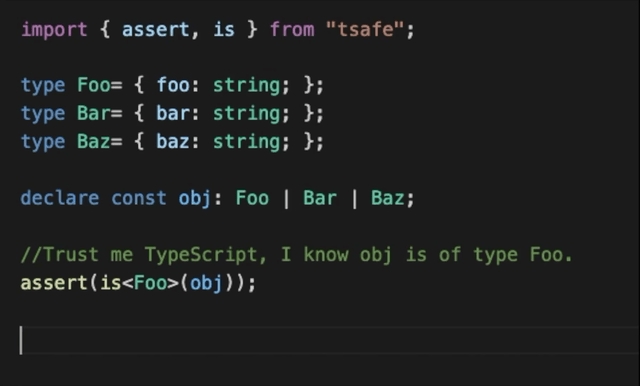is
is is meant to be used in conjunction with assert and enable you to tell the compiler:
"Trust me this value is of type T" or "Trust me this value is not of type T"

import { assert, is } from "tsafe/assert";
type Circle = { radius: number };
type Square = { sideLength: number };
type Shape = Circle | Square;
declare const shape: Shape;
//You: Trust me TypeScript, I know that shape is a Circle.
assert(is<Circle>(shape));
//TypeScript: Ok if you say so...it has a radius then.
shape.radius;Equally useful you can tell TypeScript that your shape is not a Square, it will infer that, it is then a Circle.
It is important to understand that here that when you run the instruction assert(typeGuard<Circle>(shape)) if the shape happens not to be a Circle you won't get an error at runtime.
Last updated
Was this helpful?